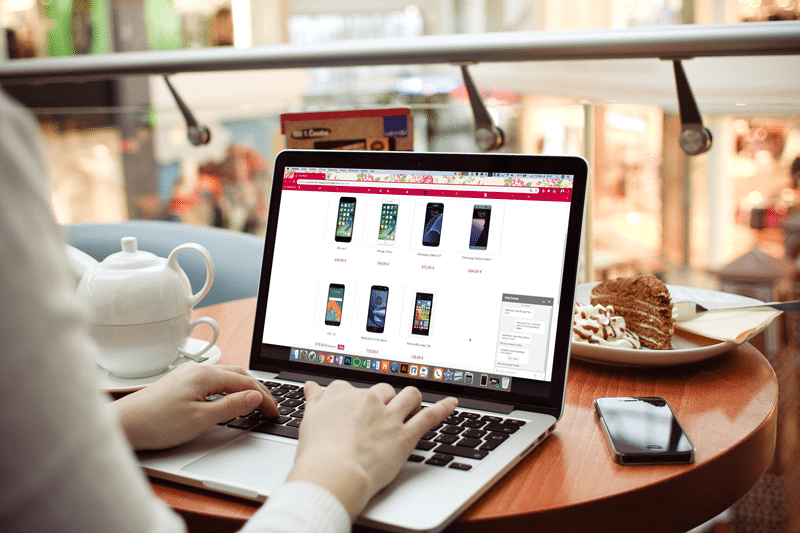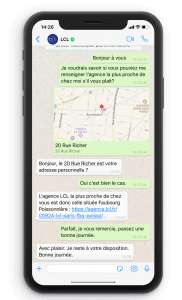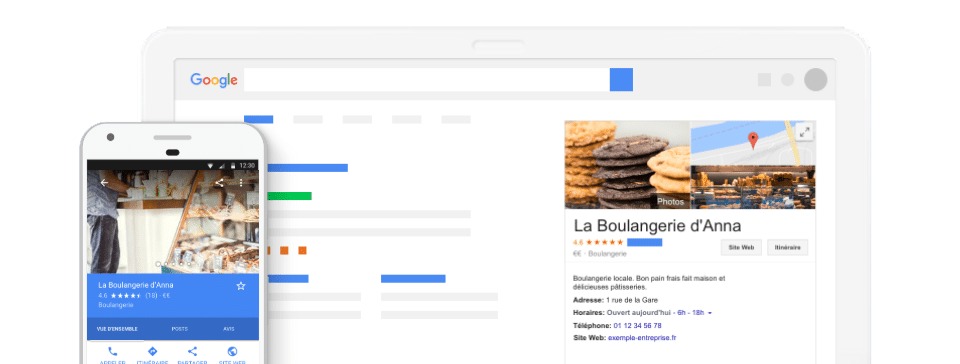In the sales sector, customer experience plays an increasingly important role: it has been demonstrated that this criterion will become the first differentiator between brands in 2020, before price and product.
While the boundaries between physical shops and sites are increasingly blurred, thanks to unified paths, customer care must also adapt to this evolution. Just as it is unthinkable to leave a store without a salesperson, it is essential for brands to adopt channels to support customers during their online purchases. In this article, we present 4 essential technologies to communicate effectively with your customers and boost your conversions.
Live-chat: increase your conversions by assisting your customers
According to a study, 44% of customers believe that getting live answers to their questions when shopping online is one of the most important features a website can offer. In addition, 68% of them leave a company when they perceive that the latter is indifferent to them.

These figures show the need to allow customers to contact the brand during their purchases. One of the most effective ways for a sales site is to use the live chat. This channel allows you to chat in real time with your customers, while they are visiting your website. It is in the form of a chat widget, allowing customers to engage in discussion with an agent to ask questions or help resolve a problem.
A study found the following results for clients using live chat:
- A 40% higher conversion rate
- An increase of the average basket by 10%.
- A 34% improvement in the satisfaction rate
One of the features of live-chat that is particularly interesting for retailers is the use of triggers to offer the customer to start a conversation. The live chat can be triggered according to specific criteria such as the amount added to the basket, the consultation of certain pages or the time spent on a page. These criteria are indicators that the customer needs more information for his decision making: offering a live chat conversation is a good way to answer questions in a proactive way.
Another live-chat feature to consider is co-browsing, allowing the agent to view the same page in real time as the client. This does not require any installation for the client or agent and can help the agent to highlight certain areas of a web page.
WhatsApp Business Solution: Talk to your customers on one of their favorite applications
Live chat is a contact point very suitable for instant interactions but has some limitations. Its synchronous nature means that the customer must remain on the website waiting for an answer, leading him to wait for an immediate answer. On the business side, this means that teams must be organized to meet this demand—customer service teamwork here is crucial. If the customer leaves the page, they will lose the conversation history, will have to restart a new session and re-explain his situation.
Messaging is a way to bypass these limits and will be more suitable for situations that do not require an immediate response. Thanks to its asynchronous rhythm and notifications, customers can ask their questions and receive a delayed response.
Among the messaging channels, WhatsApp Business Solution is one of the most relevant channels for the retail sector. With more than 1.6 billion users worldwide, it is also the least uninstalled application on Android.

By being present on WhatsApp, the sales sites allow their customers to contact them on a channel that they already use daily with their relatives. Rather than being forced to use channels such as online forms or the phone, customers can simply send a message and be notified when they receive a response. WhatsApp offers some features such as sharing media (text, photos, videos, documents), voice messages and localization to provide more context and facilitate problem solving. Thanks to its end-to-end encryption system, this channel also allows confidential information to be exchanged in complete security.
On the business side, WhatsApp Business Solution offers many advantages:
- Automate basic requests with the use of chatbots, providing instant responses to customers and freeing up time for teams
- Increase agent productivity and reduce processing time with asynchronous rhythm, conversation history and short messages
- Improve customer satisfaction and sales, by offering support more adapted to customer usage, with faster resolution
Moreover, since WhatsApp Business Solution was launched only a few months ago, adopting it allows sales players to position themselves as pioneers, close to their customers’ expectations.
Google My Business: manage customer reviews and points of sale
Another challenge in the sales sector is to manage customer reviews and comments. 95% of shoppers read online reviews before making a purchase. This makes it the most widely used source, ahead of search engines and the company’s website. In addition, 28.88% of consumers who are looking for a local business on a mobile device make a call to or visit that business within 24 hours.
One of the most important channels for reviews is Google My Business, on which 44% of local businesses are already registered for free, before Yelp, Yahoo ! or Bing. Accessible directly from search results, it allows clients to easily leave a notice and consult them.

Faced with these uses, monitoring opinions to be able to respond to them becomes essential. A negative comment left unanswered, can quickly have negative impacts on the brand.
When each store has a Google My Business profile, the volume of comments to follow can quickly be high. To monitor them effectively and respond to them in a relatively short period of time, it becomes essential to centralize their management, with the same solution as the other channels (email, live chat, messaging, social networks). It also allows the company to manage notices at headquarters or automatically allocate them to local outlets, and provide them with pre-written templates that simplify management and harmonize the message.
When we know that 96% of Internet users are influenced by the presence of negative opinions during a purchase, it becomes essential for sales actors to effectively manage Google My Business.
In-App Messaging: Make the most of your app’s investment
A mobile application is one of the most important investments for a distribution company. According to Criteo, transactions within applications account for 54% of mobile e-commerce transactions. In addition, applications have a conversion rate 3 times higher than mobile web, and 1.5 times higher than on desktop.
However, it is proven that 96% of apps are no longer used after 12 months. To make this investment profitable, the challenge is to provide users with value-added features to justify the use of the application.
In-App Messaging allows you to offer your customers an experience similar to Messenger and WhatsApp, directly within your application. They can, therefore, start a conversation very simply when they use your application, without having to leave it. This provides different advantages:
- The customer is identified through their account in the application, you access his data (customer number, purchase history, conversations…) without having to ask
- You have control over experience and data, unlike third-party applications
- The system can be used on iOS and Android, without additional installation for customers already using your application
- This feature encourages the application to be maintained over the long term and makes the investment related to the application profitable (development, promotion, updates).
How to effectively manage these channels?
After having made the decision to launch into one or more of these essential channels, their implementation and day-to-day management can appear to be a challenge for companies.
If we integrate these 4 technologies, in addition to standard channels such as email and social networks, it becomes impossible to rely on tools dedicated to each of them. The implementation time, costs, agent training time and the daily use of several tools make this approach impossible.
A better strategy is to centralize the management of these channels within a single interface. In this way, agents can manage different types of channels (messaging, social networks, live chat…), allowing a better allocation of resources.
This omni-digital approach has the following advantages:
- Smoothing of the activity of agents
- Optimization of resources
- Productivity gains
- Reduced response times
- Increase in customer satisfaction
Another point to consider, particularly interesting for the sales sector, is the possibility of adapting to peaks, during periods such as sales or Christmas shopping. Thanks to an omni-digital platform, companies can access unified reporting to anticipate peaks and allocate the necessary resources.
Originally published May 21, 2019, updated Jul 25, 2024







